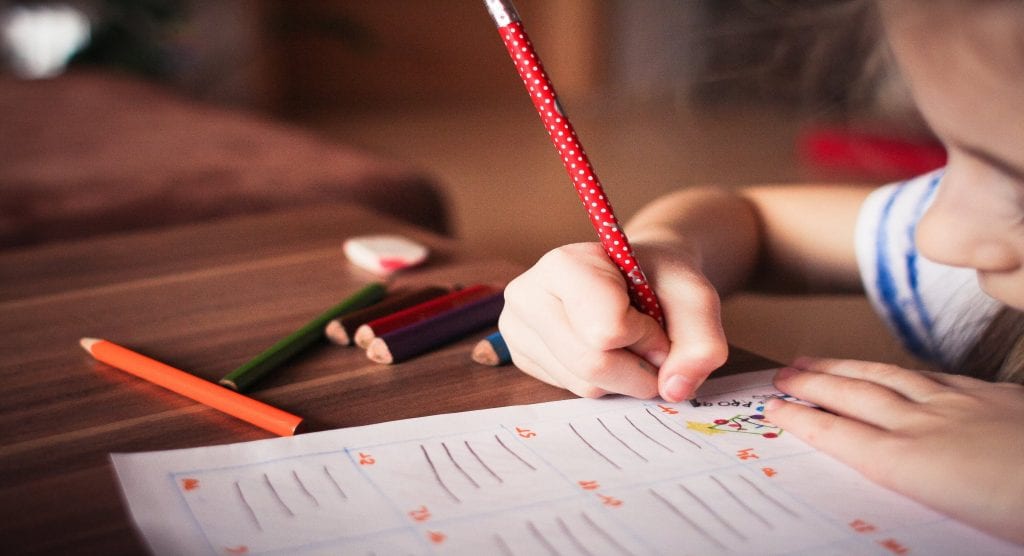The current circumstances have most definitely caused us all to readjust our lives. Whether professional or personal, we are having to change the way in which we fulfill responsibilities and meet expectations. Being an educator, administrator, and founder of a school has certainly been a unique experience, especially right now. For some time I’ve thought of 2019-2020 as our inaugural school year, but now I know it’ll be memorable for a much different reason. We are, quite literally, living in a history textbook chapter that we’ll inevitably be teaching our students about in the future.
Throughout the COVID-19 pandemic, so much has changed about my job. I am teaching kindergarten in my home, interviewing teachers through a screen, cheering on parents through email, and corresponding with my students through the Marco Polo app. Through all of the change there has also been so much reaffirmed to me as both an educator and administrator.
1. Teachers are some of the most extraordinary professionals.
We put our students in their cars during afternoon carpool expecting to see them again on Monday morning. By Friday evening, we knew this wouldn’t happen. We formulated a month’s worth of new and unfamiliar plans and by early Monday morning, this plan was ready to be executed. Teachers are innovative, creative, compassionate, reflective, determined, and flexible. We thrive on facing challenges and welcome a whole new set every August when the school year begins. We create rules, schedules, and routines, yet we know that every day is different and anything can happen. We continuously go back to the drawing board when needed and can troubleshoot through so many circumstances. I’ve been amazed watching my peers all across the world take on this new way of teaching without missing a beat. Distance learning has not been easy, but we’ve done it because we deeply care for our student population. We want our students to be successful and, even more than that, we want them to feel a sense of normal. We know they’re confused. We know they can’t fully understand what’s happening. What they will know, though, is that their teacher will not stop working hard for them. Maybe we weren’t trained for distance learning, but we were made for it.
2. Partnerships with families are essential.
We knew these partnerships were important before distance learning, but the current circumstances have magnified how essential families are to educating the whole child. I intentionally say “families” and not “parents” because these relationships often extend to those outside of the immediate family. Teachers can send lesson plans, videos, resources, and encouragement as much as possible, but without family participation the efforts fall short. It has arguably never been more important for teachers and families to have open communication. It is my hope that this experience will only strengthen future partnerships between families and teachers as well as show us more effective methods to create and maintain relationships. When these partnerships effectively exist, both parties can work together to recognize and execute the best plan to meet the child’s needs. Teachers do not expect families to become teachers, but rather someone who can help carry out the plan. It is no small feat, and we’re cheering you on the whole way.
3. One size does not fit all.
As I’ve said, family partnerships are so important, but this type of learning does not and cannot look the same for every family. Let’s think about the the big picture. We have parents literally on the front lines taking care of COVID-19 patients in hospitals, clinics, ambulances, nursing homes, etc. We have families trying to save their businesses and life’s work while the economy crashes. While parents are working full-time jobs, we have grandparents at home caring for and trying to teach their grandchildren. We have parents who had a six-figure salary last month who are applying for unemployment. We have families worried about hospitalized loved ones. We have parents needing to run errands and buy groceries for elderly neighbors. We have single moms or dads trying to balance working at home with taking care of children all day. Is every family going to fulfill all responsibilities given by their child’s school? Maybe. Maybe not. One size does not fit all in the classroom and it does not fit all at home. Each family is under a set of unique circumstances with a unique set of priorities. Teachers are trained to consider individual needs and this has not changed during distance learning. It is OK and expected that teaching and learning will look different from household to household and even from day to day.
4. Children are resilient.
I say this multiple times a week during the school year. Children have a unique ability to bounce back from hardships. Even when change is difficult, it doesn’t take long for them to turn a situation around. If you were to log on to your social media right now, you’d likely find a lot of adults venting. I don’t blame them. Times are tough. Our children, though, can recognize this as a memory-making moment in time more than we can. If there was Kid Facebook, most of the posts would probably read, “BEST DAY EVER!” Our children are rolling with the changes and they’re all going to be OK. With that being said, we’re all missing and mourning moments in our life whether its graduation, a baseball game, Easter Sunday with loved ones, their birthday party, the science fair, or a playdate. The most important thing we can do for our children is to make sure they feel loved and safe. We can help them as they realize their new normal by allowing them to decompress, ask questions, rest, and really BE CHILDREN. This may require them to cling to you, throw a tantrum, be alone in their room, step away from school work, take a walk outside, have a hard conversation, or do whatever they need to do to feel their feelings.
5. Our school system needs to reevaluate what is most important in regards to student performance and success.
In order to do this, we must look at how we define, prioritize, and determine student performance and success. As policies about standardized testing, classroom assessments, teacher performance, instructional minutes, and grade promotion are being reexamined and temporarily changed, will it change the way we view these policies? How have these policies shaped or contradicted our educational philosophies? Will the policy changes have long-term effects on our students? If not, are they policies that we can stand by? In addition, now that we have experienced distance learning, it is inevitable that it will affect how we teach in the future. Among many of other things, this experience has made us think about how technology can be used more in a more meaningful and effective way. It has also shown that the social aspect of school is so important on a student’s development of communication and collaboration skills. Will distance learning change our focus and the way in which we prepare our students to be successful in the future? This all remains to be seen, but there is no better time than now to begin thinking through these things as we prepare for next school year.
















